gettyimages, dragon for real
With space becoming an increasingly scarce resource, more and more imagination is needed when it comes to vegetation. Even in densely populated cities like Hong Kong where millions of people live, it is still possible to find abundant square meters that can be turned green. The positive effects of urban vegetation concepts such as on this skyscraper in Kowloon offer ample reward for the planning workload: green plants produce oxygen, filter exhaust fumes and bind fine particulate matter. They moisten and cool the air, offer space for insects and birds and provide shade. But the most important thing is that green is pleasant to look at, even if you sometimes have to get up on high to watch it grow.
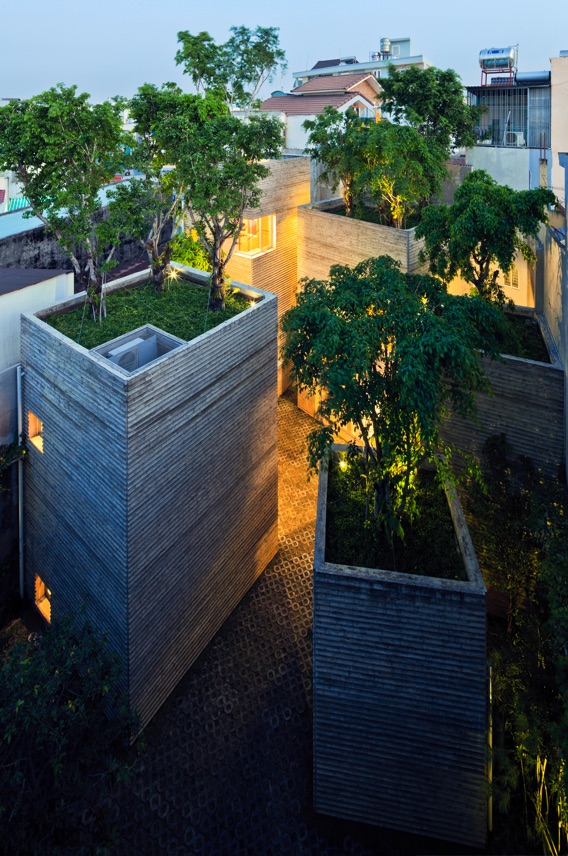
Growing above head-height: in the "House for Trees", mini-houses also act as plant troughs.
How much space does a private bit of green need? The "House for Trees" in Ho Chi Minh City answers the question with a very minimalist approach. The house actually consists of five small boxes and measures just 111 square metres. Given the lack of ground space, the Vo Trong Nghia Architects simply planted trees on the roof of the boxes. And so the "House for Trees" acts as a priceless green oasis in a tropical city with just 0.25% green space.
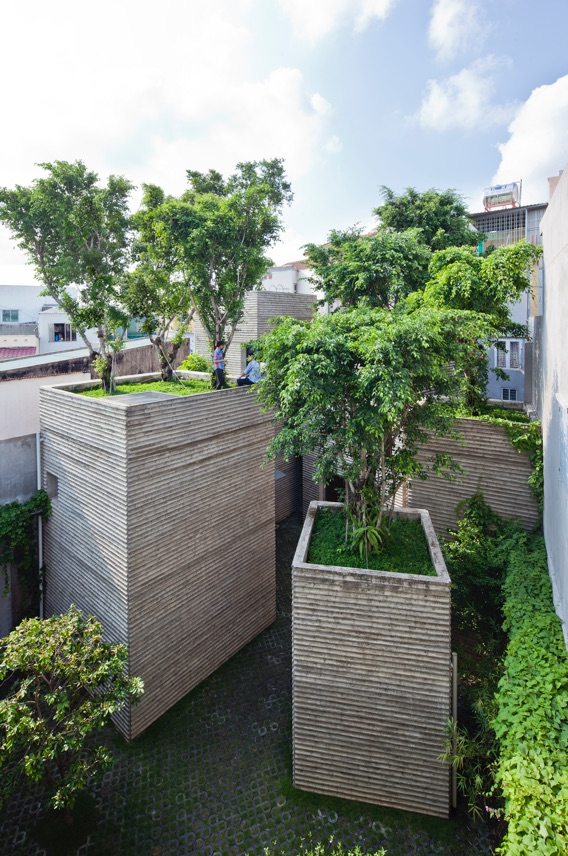
Ho Chi Minh City, Vo Trong Nghia Architects
The words "green revolution" could be used to describe what the Italian architect Stefano Boeri has done with two apartment blocks at the heart of Milan: the two high-rise buildings measuring 80 and 110 metres in height stand out with their vegetation consisting of 900 trees and 20,000 other plants that had been specially prepared for their task. They are watered with the process water accumulated in the buildings; they are tended and pruned by three gardeners who lower themselves for this job from cranes installed on the roofs for this particular purpose.
Boeri's “Bosco Verticale” could soon become the prototype for green skyscrapers all over the world. "The Vertical Forest is a model for sustainable residential construction and urban reforestation without taking up valuable urban space", says the architect. Positive secondary benefit for the residents: the facade of the building changes appearance with the seasons.
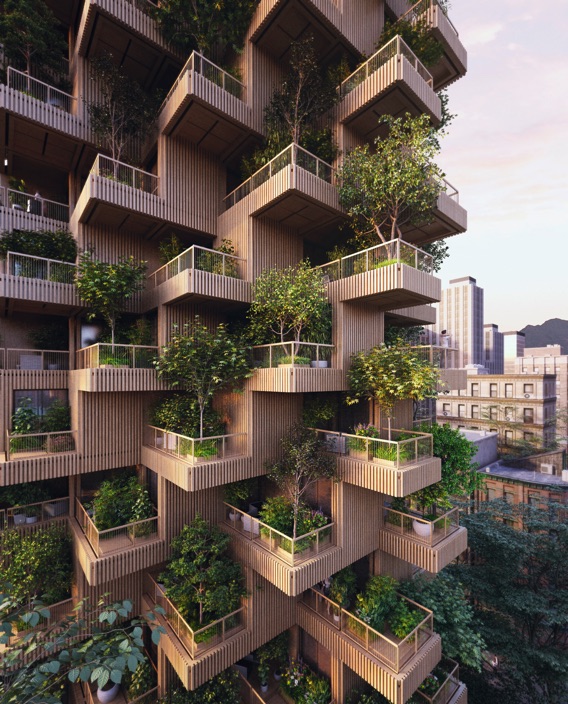
Green vision: the 18-storey "Tree Tower Toronto“ is to be built from the material of trees. (Studio Precht)
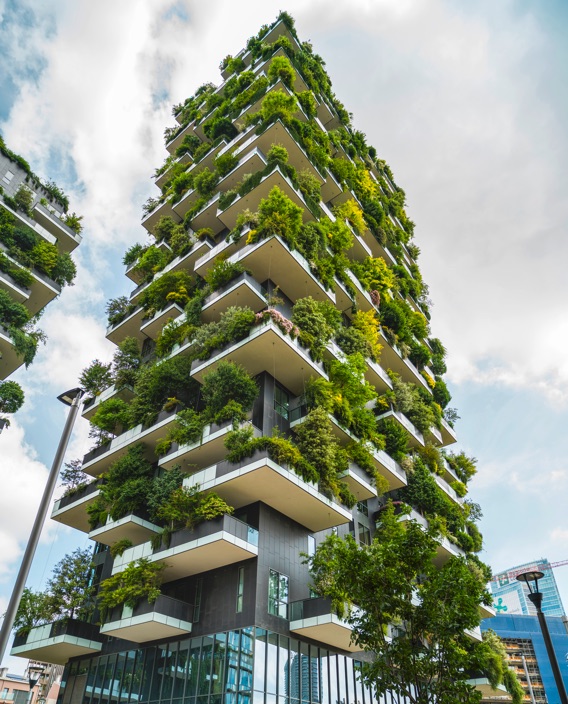
Vertical Forest: around 900 trees grow on the facades of two residential towers at the heart of Milan. (Stefano Boeri Architects)
When you build a house, you inevitably take something away from nature. But you can also give it something back, as shown by Maynard Architects. In Melbourne, Australia, they have combined a double-storey terrace house called "King Bill" with a previously neglected piece of land to create a pocket park. The foundations for the new pavilion were laid with utmost care to avoid causing any root damage.
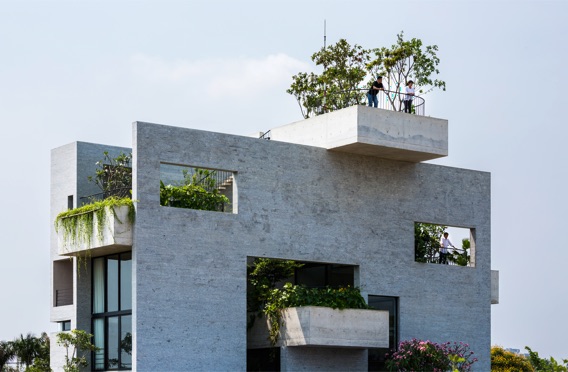
In Binh House in Ho Chi Minh City, plants act as a kind of natural air-conditioning. (Vo Trong Nghia Architects)
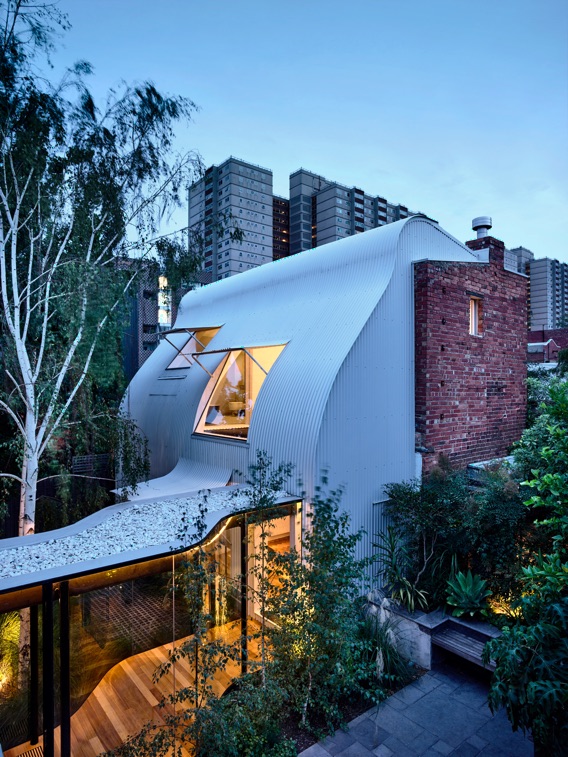
From neglected back yard to genuine eye-catcher: "King Bill" in Melbourne, Australia. (Austin Maynard Architects.
photo: Derek Swalwell. twitter.com/AndrewMaynard:@AndrewMaynard)